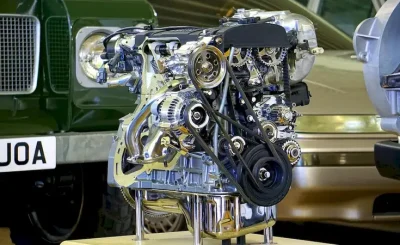Engineers have long worked to enhance the aerodynamics of cars. Doing so decreases driving force requirements while simultaneously cutting back on fuel consumption and carbon emissions.
Aerodynamicists were among the first to realize that bodies moving through fluid experienced resistance, or drag. This resistance is caused by pressure distribution and turbulent flow from a thin boundary layer that was constantly present within fluid environments.
How Does Aerodynamics Work?
Aerodynamics is the study of how air moves around objects. Aerodynamics’ rules help explain four forces essential for flight – lift, weight thrust and drag – which allow airplanes to take flight or car engines to move forward.
An aircraft wing generates lift by taking advantage of differences in pressure between fast moving air and slow moving air, with faster moving air having lower pressure than slower air; its slightly curved top increases its velocity over that region of the wing generating lift force and keeping plane aloft.
Though mathematical equations provide an accurate representation of how an aircraft wing generates lift, scientists have been unable to come up with a fully physical explanation for this process. One prevalent theory relies on Bernoulli’s principle stating that fluid pressure decreases with increased velocity – yet this account fails to take into account all forces present when an aircraft wing is at rest.
Why Is It So Important?
Aerodynamics is an essential branch of physics as it investigates forces that influence moving bodies, particularly air or gaseous fluids such as liquid. Aerodynamics primarily deals with lift forces and drag forces. Engineers utilize it to assess whether tall buildings or bridges will withstand strong winds.
Frederick Lanchester and Ludwig Prandtl were two pioneering figures who developed early scientific accounts of aerodynamics during the late 18th century. Lanchester proposed his theory for airfoil lift circulation; Prandtl provided mathematical treatments of it.
Aerodynamics have had an immense effect on car performance and fuel economy. Race car engineers have long understood the significance of aerodynamics to racing vehicles; its use enables faster speeds with improved handling characteristics at higher speeds. Their knowledge has since been applied to regular passenger vehicles – now all cars are designed with efficiency in mind.
What Are Some Examples of Aerodynamics in Cars?
Some cars feature sleek exterior designs that enable them to cut through air more efficiently while others contain channels designed to direct airflow and minimize drag. One such example is Toyota Prius hybrid’s distinctive aerodynamic shape and impressive Cd rating of.26 which helps it achieve impressive fuel economy numbers.
Car manufacturers rely on wind tunnels to evaluate prototypes and understand how they will behave on the road. By sucking air past their vehicle at high speed to simulate driving through still air at speed, wind tunnels allow car manufacturers to see how air interacts with it as well as ways to shape it to reduce drag, create downforce for improved cornering performance and increase top speeds.
Other elements that may contribute to a vehicle’s aerodynamics include front and rear spoilers, tire and wheel designs and weight. Even its size and weight can have a major effect on how efficiently it cuts through airflow.
How Can You Make Your Car More Aerodynamic?
Aerodynamics are the rules governing how air flows around objects. Therefore, everything from rocket launches and kite flights are subject to aerodynamic laws.
As automobile engineers realized how wind resistance hindered car performance, they started developing more aerodynamic vehicles. While initially used only for racing or setting land speed records, such designs eventually become part of mainstream automotive production.
Car bodies and front and rear spoilers play an important role in their drag. Airflow over the vehicle can either be turbulent or laminar; turbulent flow causes drag while laminar flow enables smoother motion of the car.
Size and weight also play a significant role in aerodynamics for cars. Larger and heavier vehicles require more power to move through the air, increasing fuel consumption while limiting top speeds. Conversely, cars designed with aerodynamics in mind tend to be smaller and lighter, improving both their fuel economy and acceleration capabilities.











